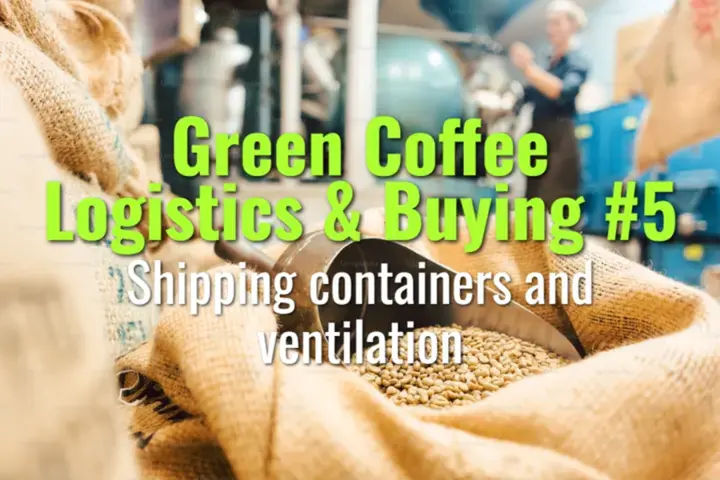Shipping containers and ventilation
This topic explains how shipping containers and ventilation affect green coffee logistics, the risks of condensation and mold, and best practices for safe export transport.
- Coffee Basics Nerds
- 2 min read
Article 5 of 12 in Green Coffee Logistics & Buying/

Why Containers Matter in Coffee Trade
- Coffee is typically exported in 20-foot or 40-foot containers.
- Containers must protect beans from moisture, odors, pests, and temperature swings during long sea voyages.
Container Types for Coffee
- Standard dry containers: Most common, cost-effective.
- Ventilated containers: Specially designed with small air vents to reduce condensation.
- Reefer (refrigerated) containers: Rarely used; too costly for most green coffee but considered for ultra-premium lots.
The Condensation Problem (“Container Rain”)
- Coffee is hygroscopic and exchanges moisture with its environment.
- Warm daytime air inside containers condenses on cold metal walls at night.
- Droplets fall onto bags → mold, staining, baggy flavors.
Ventilation Solutions
- Ventilated containers allow slow air exchange, reducing condensation risk.
- Liner bags (e.g., GrainPro inside jute) provide an additional barrier.
- Desiccant packs absorb excess humidity during shipment.
Best Practices for Loading
- Stack bags on pallets or dunnage, never directly on the container floor.
- Leave air gaps for circulation between container walls and bags.
- Inspect containers for rust, leaks, or contamination before loading.
- Use moisture barrier liners in humid shipping seasons.
Risks of Poor Ventilation
- Mold growth, sour or baggy flavors.
- Loss of specialty-grade status.
- Buyer rejections or price discounts.
Market & Quality Implications
- Specialty buyers expect proof of container preparation and ventilation measures.
- Certifications (Organic, RA, Fairtrade) may require documentation of safe transport.
- Reducing shipping damage protects farmer reputation and buyer trust.
Lasting Importance
Shipping containers and ventilation are final quality safeguards in coffee logistics. Proper container choice, loading practices, and humidity control ensure that coffee arrives clean, stable, and true to its origin after weeks at sea.
You might also like:
- Tags:
- Lasting Importance
- Green Coffee
- Best Practices
- Specialty Buyers
- Specialty Grade
- Coffee Trade
- Ensure Coffee
- Risks Poor
- Implications Specialty
- Mold Growth
- Coffee Arrives
- Matter Coffee
- Certifications Organic
- Buyer Trust
- Farmer Reputation
- Inside Jute
- Bags Grainpro
- Cost Effective
- Market Quality
- Coffee Hygroscopic
- Coffee Logistics
- Premium Lots